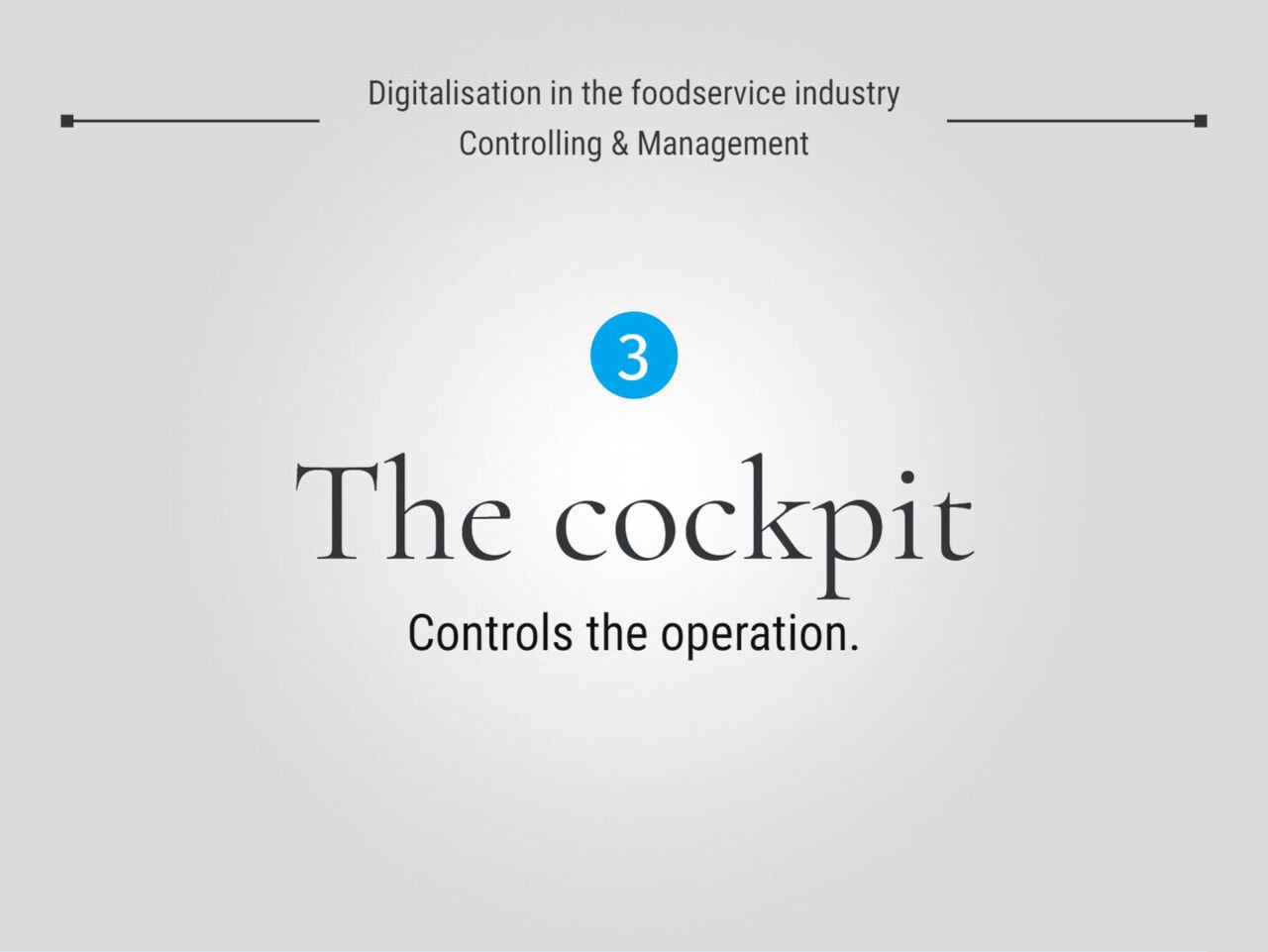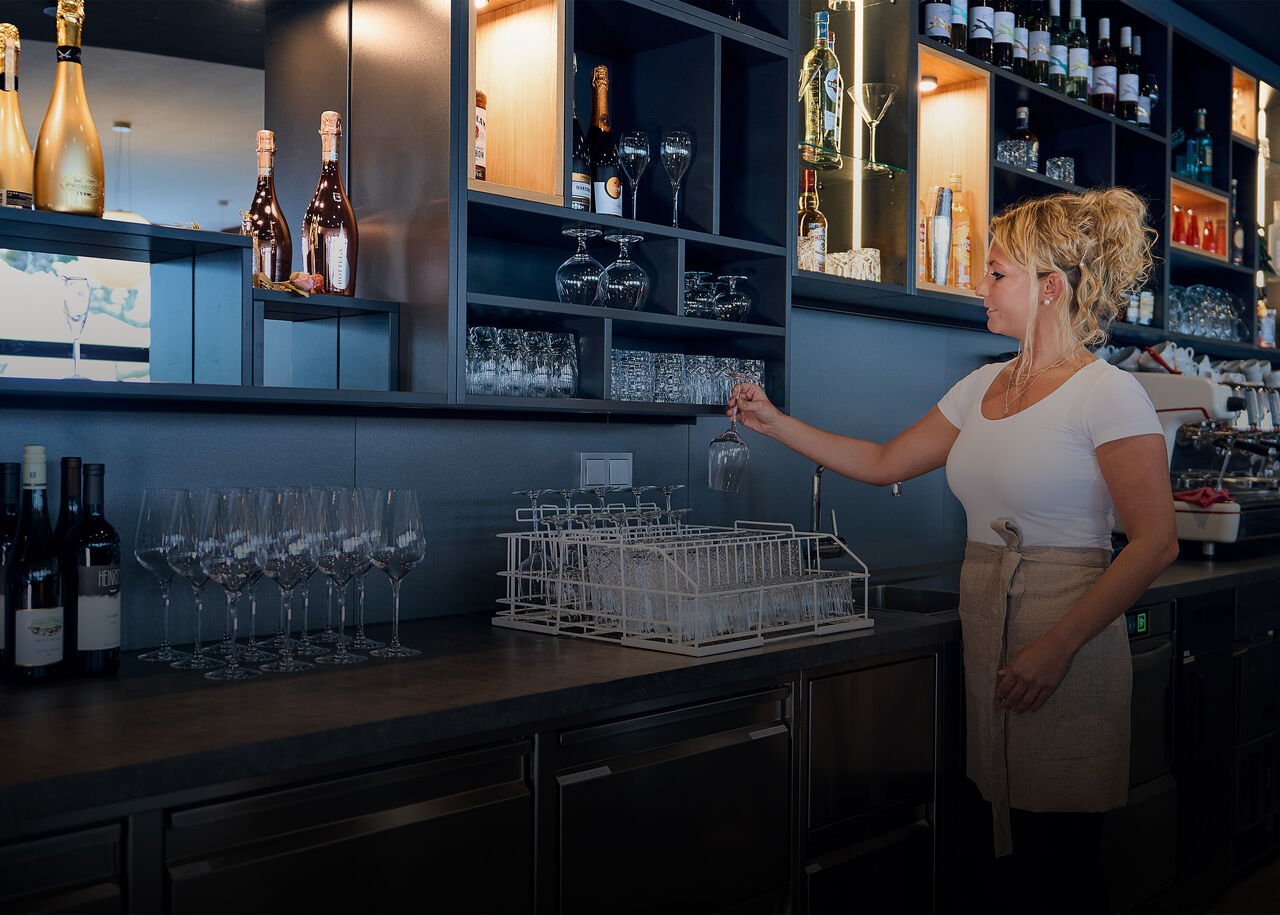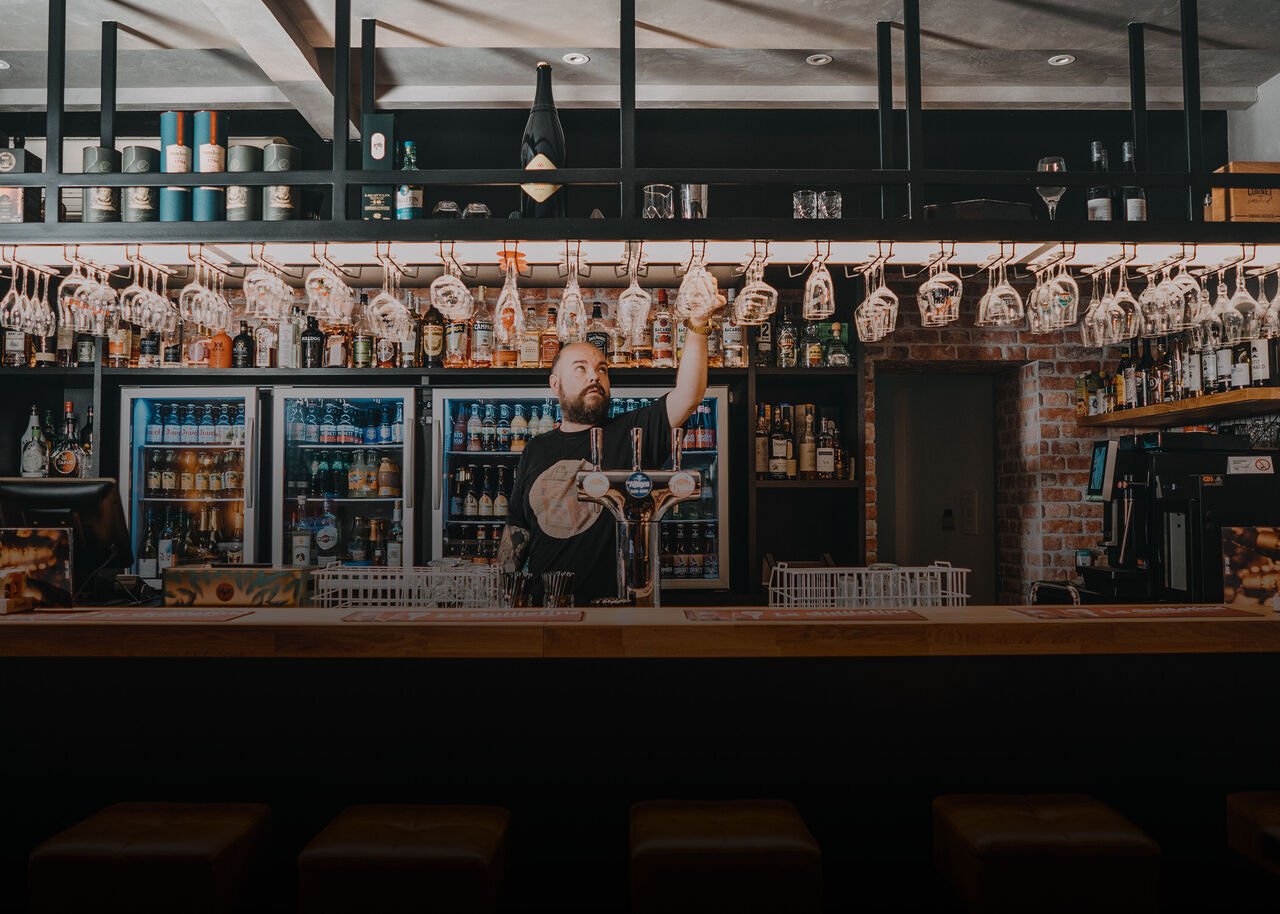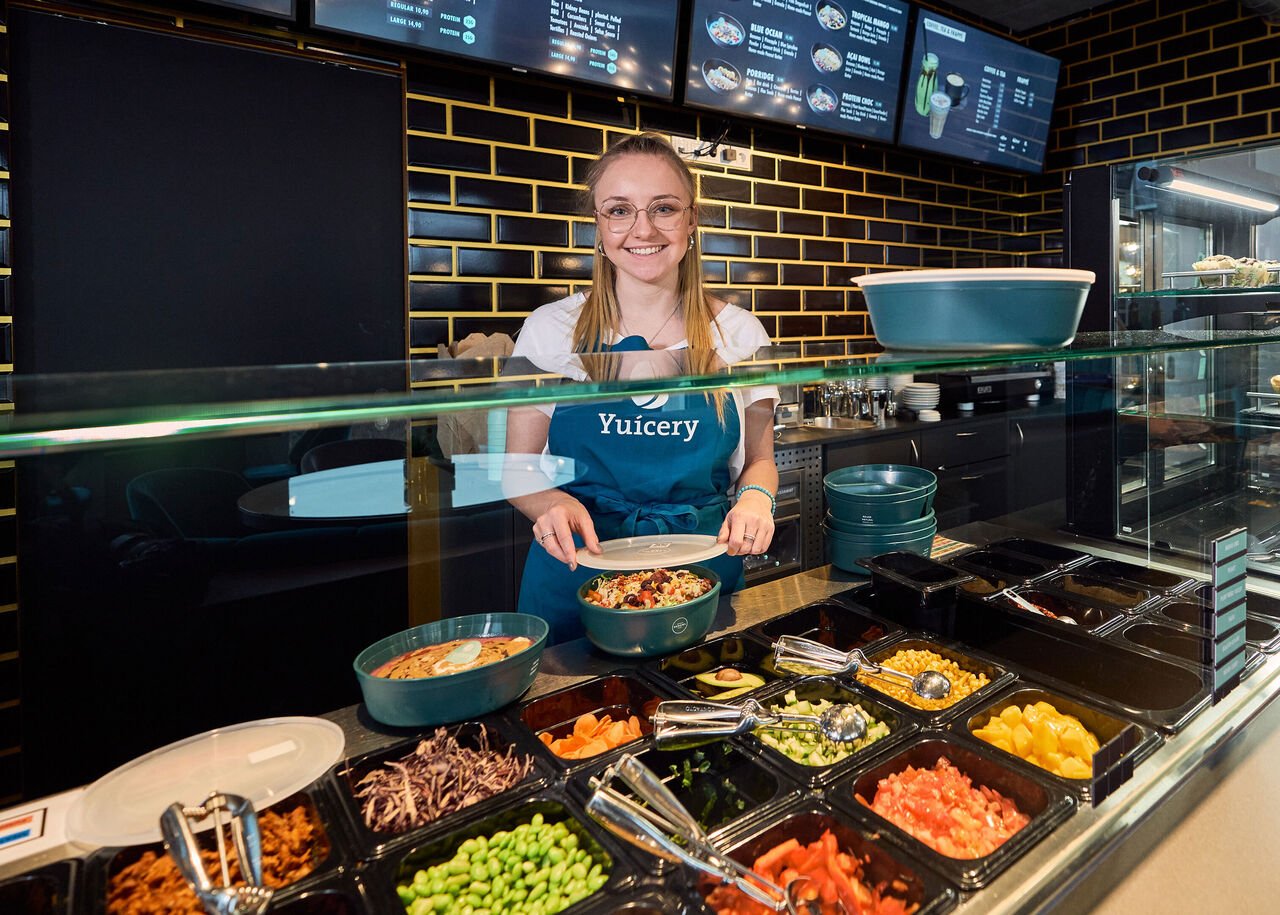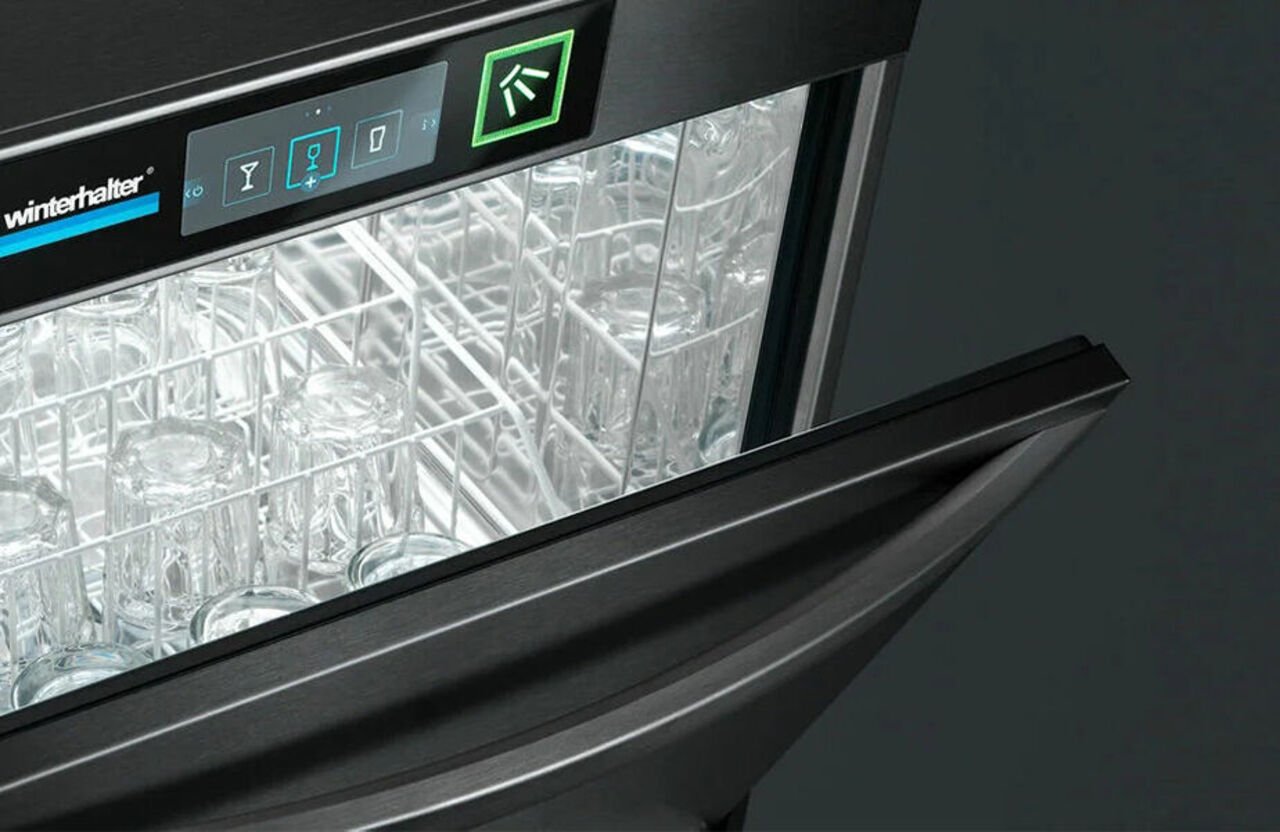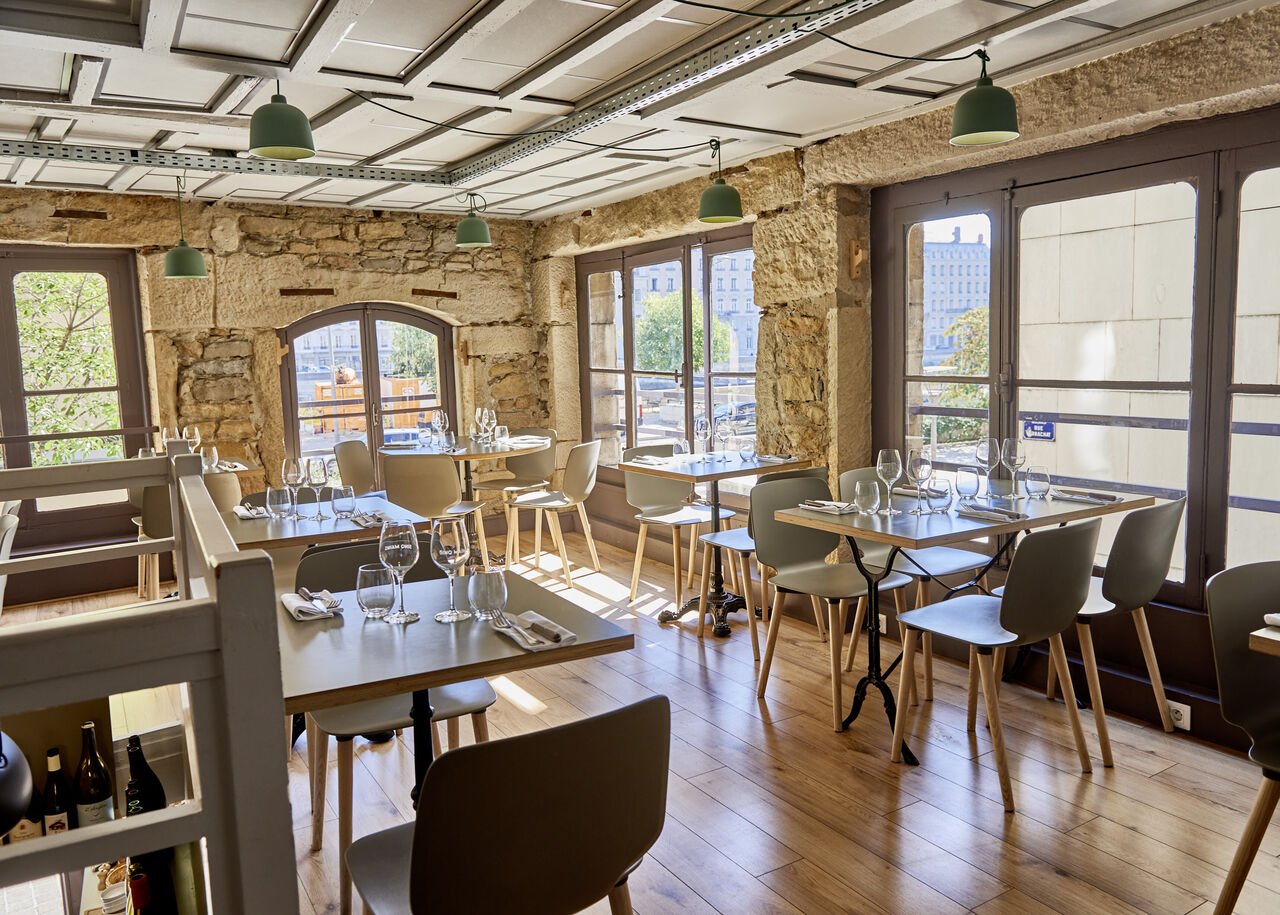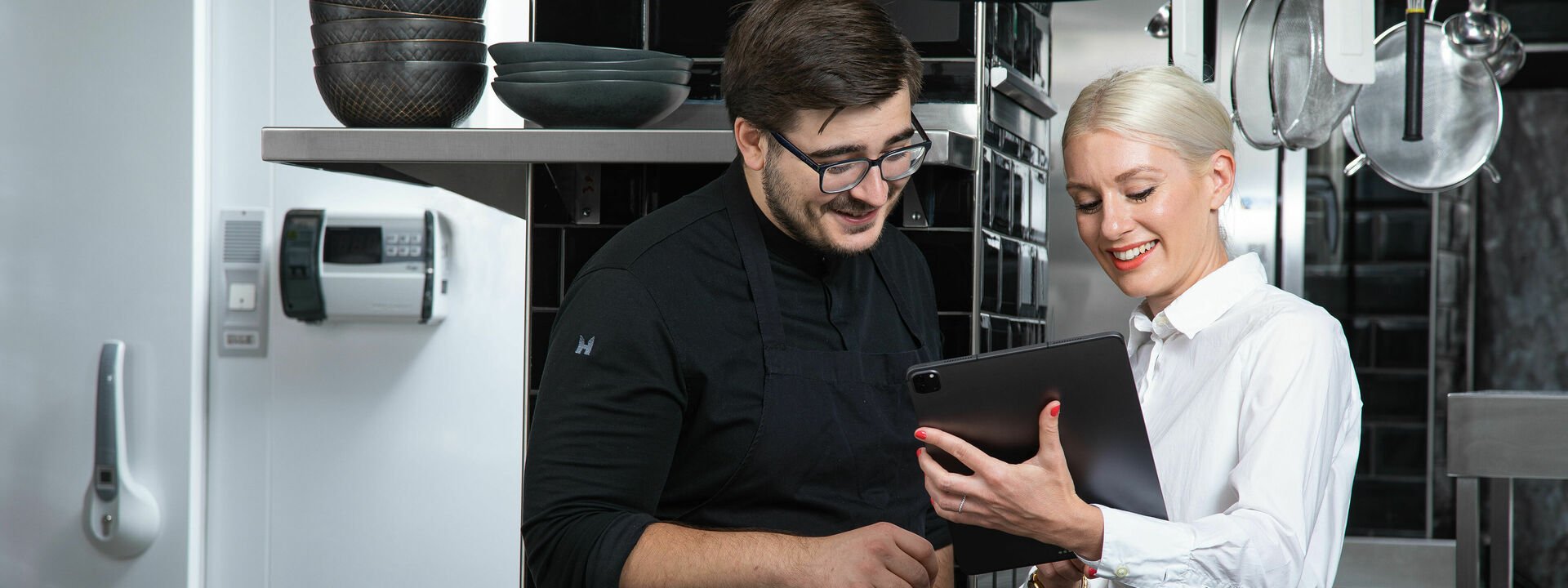
Digitalisation in the foodservice industry – successfully exploit opportunities!
From goods purchasing to guest management, from marketing to staff planning – digitalisation is a 360 degree topic for the foodservice industry. It makes almost every work process simpler, more transparent, faster, better – and usually cheaper as well. Furthermore, digital technologies lay the foundations for new business models, enable better networking with customers and suppliers and provide for more effective acquisition of new customers. In this article, you will learn how you, as a foodservice business, can benefit from digital tools and how you can successfully introduce or further promote digitalisation in your business.
1 Online marketing
People in the foodservice industry probably think of marketing first when they think of “digital”. Most foodservice establishments now have a web presence and many use an online reservation system. But there are many more ways to gain new customers, increase customer loyalty, offer tailored productsand receive positive reviews. Here is an overview of the most important tools.
Website
| A well-structured website optimised for smartphones is and remains the heart of a business’ digital presence and marketing. It contains the most important information and data about the company and the kitchen, the current food and drink menu, event information (including ticket booking), job offers and, of course, a built-in reservation option. Tip: Regularly review and update the content of your website to maintain your presence. And check at regular intervals whether the legal notice and privacy policy comply with the current legal provisions. |
Social media
| Use social networks to build a community, retain regular guests and fans and reach new guests. With Facebook and Instagram in particular, you can achieve a high reach with exciting posts, attractive images and cool clips – and all practically free of charge. Good visuals and an authentic approach are important. Making your food and drinks look attractive when served – nice plating, fancy plates, stylish glasses etc. – motivates guests to take photos and share them. User-generated recommendations are worth their weight in gold! Tip: Involve employees who enjoy social media. |
Search engines
| Being able to find your website on Google and other search engines is crucial. Include the most important keywords in your texts: keywords that characterise your business, such as “German cuisine in (name of town/city)”. A fast-loading website optimised for different end devices (“responsive web design”) in conjunction with regular updates are crucial to gaining a good ranking. If you want to ensure success, consult an SEO expert. Tip: The most popular searches relate to questions such as “Where can I have a good lunch in (name of town/city)?” or “Which is the best Italian restaurant in (name of town/city)?” Provide good answers to these questions and you will be found! |
Newsletter
| An exciting and well-designed newsletter informs regular guests about current news, offers and upcoming events – including direct booking options. Keep it short and sweet – provide short texts, a clear layout, and no more than one newsletter per month. You will gain new subscribers to your newsletter not just through traditional subscriptions via the website, but also through reservations (see next point). Tip: Gain inspiration by subscribing to the newsletters of renowned bars, pubs and restaurants. |
Reservation system
| With a digital reservation system you can convert your business from telephone reservations to online reservations. This kind of system offers several advantages – it helps you with planning, lessens the burden on your waiting staff and allows your guests to make requests outside of opening times. In addition, a reservation portal can improve guest management by storing relevant information in the system. For example, a regular guest’s birthday, a preferred seat in the restaurant or a favourite dish. And digital reservation systems give you the opportunity to generate customer data – for example for newsletter distribution. Last but not least, you also receive information and key figures for monitoring (turnover, capacity utilisation, etc.). Tip: Integrate your reservation system into your social media channels, if technically possible. This way, your customers can easily leave a rating when they make their next reservation. |
Foodservice portals
| You should be as present as possible in the digital world of foodservice. This includes foodservice portals, online magazines and business directories, which often publish tips and recommendations from the region. Make sure your entries are up-to-date and provide editors with information on new offers, for example. Or invite regional editors to come and test the new menu. Rating sites are also important – keep information and photos up-to-date and, if necessary, take ownership of entries created externally by the site operator as the legal owner. This way you can enter into dialogue and respond to praise and criticism accordingly. Tip: Check the web on a regular basis and see where and how your business is being reviewed. |
Influencers
| They are on Instagram, TikTok, Facebook and YouTube and post photos and videos of themselves: in selected places, together with other people or with certain products. Influencers and influencer marketing are now used by many companies to reach either as many people as possible or a specific target group with one post. You can also use this principle for yourself. Tip: Research suitable food influencers. They don’t have to have a huge reach – if they have a good network in your region, they can be very effective. Contact the influencers and discuss the possibility of working together. This is particularly useful if you have an exciting topic or are planning a special event. |
The advantages of digital merchandise management
Important: Converting purchases or goods procurement from analogue to digital is a process that takes some time – but then quickly pays off. Tip: Define your goals in advance, compare individual suppliers and involve your team. It may also be useful to call in external advisors for support!
By the way, if one of your small suppliers or regional farmers is still working with analogue processes, this does not mean they have to convert to digital. If you order the majority of your ingredients through digital means, you will have more time for the smaller producers.
3 Kitchen and kitchen equipment
Constant time pressures, acute staff shortages, strict hygiene regulations: if you want to be successful in the tough everyday world of the foodservice industry, you need reliable kitchen technology and efficient work processes as your foundations. Digital kitchen appliances and the “Internet of Things” are a valuable aid when it comes to the balance between quality and efficiency. They collect data and provide important information based on it – for example, to save costs. They support and relieve the staff through automated work steps. They enable predictive maintenance and provide safety – in terms of hygiene and HACCP. We will highlight four important keywords relating to the digital kitchen.
Internet of Things
| Refrigerator and coffee machine, combi steamers and warewashers: technical devices and machines in the foodservice industry are increasingly equipped with sensors and software. They are conveniently controlled via a display and have a large number of predefined programmes and automatic functions. And they are networked with other devices and systems via the Internet. This networking technology is called the “Internet of Things” (IoT). By networking the devices, they can be operated, controlled and fed with information from outside. A restaurant or hotel chain can, for example, transfer recipes and preparation methods from their head office to the individual kitchens so that the same high quality is achieved everywhere. Important for the foodservice sector: digital kitchen technology often has an automated HACCP control on board to ensure maximum hygiene safety. |
Predictive maintenance
| What could happen and when? Many digital kitchen appliances can provide an answer to this question – and thereby enable predictive maintenance. In contrast to reactive maintenance in the form of a repair or preventive maintenance carried out to a fixed schedule, predictive inspection is based on the evaluation of process and machine data. It is therefore based on the actual condition of the machine – for example, its service life as well as certain measured values and diagnostic data. The aim is to maintain machines, plant and equipment proactively and with foresight in order to minimise downtime. Ideally, disruptions should be able to be predicted before downtime occurs. |
Less Waste
| Digital kitchen appliances create new opportunities – including waste reduction. How much organic waste is produced in your kitchen and how much food is left by your guests? How much per dish and how much per ingredient? This is often a blind spot in the foodservice industry. But now there are digital solutions combining scales, a rubbish bin and camera. The scale weighs the amount of food that is thrown away, and the camera or software behind it identifies which ingredient it is. This information can then be used to adjust and optimise the menus and quantities. This solution is ideal for large kitchens in canteens, restaurants and hotels. |
Kitchen monitor
| One thing is particularly important during peak times in the foodservice industry – good organisation and a controlled sequence of processes. Which order is up next? Where did the note go that’s with the order? Questions like these cause additional chaos – and make for dissatisfied guests. A kitchen monitor or “Kitchen Display System” (KDS) provides the necessary overview. It displays the incoming orders and offers the option of combining dishes, for example, if several tables have chosen the same dish. Moreover, orders can be filtered by area. The patisserie or bar will then only see the orders intended for them. This reduces the error rate and orders can be processed more quickly. |
Example: connected warewasher
With the digital Product info: Connected Wash">CONNECTED WASH service, Winterhalter demonstrates that the networking of kitchen appliances is not a gimmick. Instead, it provides concrete benefits – for example, greater safety and efficiency. With CONNECTED WASH, your machines can be integrated into your network and all the important operating data can be evaluated. Consequently, recommendations and actions are made that will help to optimise the washing process. The machine status can be monitored from anywhere in the world through an app. Further advantages: If a critical error occurs in the washing process, the machine not only shows a warning in the display but also sends an automatic message to a smartphone or tablet – for example, if the detergent is about to run out or if the wash field is blocked. In this way, the employees can react in time and prevent longer downtimes. The digital service area also makes it easy and convenient to order chemicals and to arrange a service appointment. And the machine’s software is always up-to-date because it automatically receives all important updates.
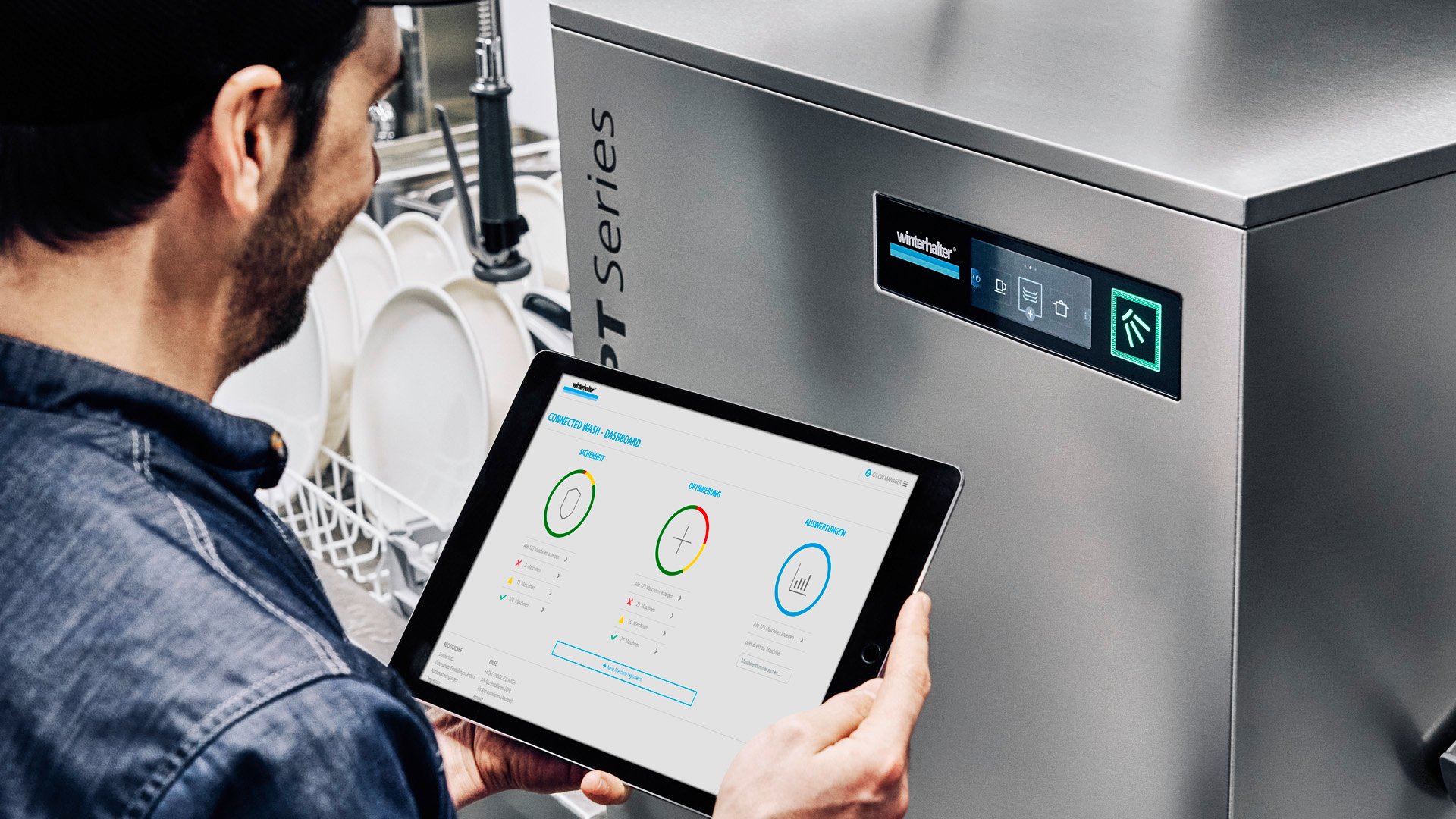
4 Controlling and management
Rising purchase prices, rising energy costs, rising personnel costs. Against this background, it is more important than ever to calculate your selling prices accurately, plan your required quantities precisely and keep a constant eye on your figures. Your tax consultant’s end-of-month business analysis may already be too late. What you need is real-time control. Digital solutions make it possible.
5 Plan, find and retain staff
The days of receiving a note requesting a particular shift, and the chaos that this causes in the office, are long gone. Digitalisation not only makes staff planning and shift scheduling simple and efficient, it also presents opportunities to find new employees and retain existing teams.
Recruitment
The relevance of print media has been declining for years. These days, it’s no longer enough to simply place a job advertisement in the trade media or newspaper. The path to success is via the digital channels of the online world. There are a number of opportunities here.
- Job advertisements on your own website
- Posting on social media channels
- Ads on job portals and in career networks (some may be subject to a fee)
- Short informative and entertaining clips presenting your work
- Image video presenting the company and employer, and their services
Take a look over the fence. Take a look around you. How do companies in other industries go about online recruiting? What instruments do they rely on? Maybe you can use one or two of them for yourself!
Staff retention
Retaining good staff is just as important as attracting new staff. Digitalisation can help here too. A modern workplace that has all the latest technology increases employee satisfaction
- Workflows become simpler and easier
- More time for creativity and activities
- The younger generation in particular like to use digital tools
- Digital solutions promote self-organisation and self-determined work in kitchen and waiting staff.
- The investment in digitalisation gives the company a modern and contemporary image
Older employees in particular are sometimes sceptical when new digital tools are introduced. That’s why it's important to show them the advantages – easier work, shorter walking distances, more time for the guests etc.
6 Pickup, delivery, webshop
Since the lockdowns, many restaurateurs have been offering take-away food – for pick-up and/or for delivery. Some have even started selling their own dishes and deli products online and tapping into new target groups. At the end of our 360-degree view of digitalisation in the foodservice industry, we give you suggestions for opening up further areas of business.
Pickup
|
▷ Online pickup with delivery Pick up something to have for lunch in the office, have a snack on the way or pick up something on the way home: Pickup and take-away products make this possible. What makes them attractive, first and foremost, is their “restaurant quality”. Secondly, the time saved. If your lunch break only lasts 30 to 45 minutes, you need something quick to eat. How you can make this service even more attractive? It’s easy – offer your guests the option of online payment when ordering online! |
Delivery
|
▷ Online ordering with delivery Ordering food and having it delivered has been booming since the coronavirus pandemic – fierce competition has already broken out among delivery services in the big cities. They work with different restaurants, kitchens and fast food providers, dealing with the logistics, i.e. the route from the restaurant to the customer. This means that as a foodservice business, you save on having your own delivery service – but pay a commission of around 25% of the order total for this service. Larger businesses and chains may find it more lucrative to set up their own delivery service with vehicles, drivers, equipment, etc. – but this requires a bigger investment. What you should definitely check beforehand: Which of your dishes can be delivered? Do you need to modify your recipes or add new dishes for your delivery service. And can you work with the same prices or do you need to recalculate them due to the commission or logistics charges? |
Webshop
|
▷ Interesting supplementary business Soups and stocks, mixed spices and pastries, spreads, cocktails etc., etc. If you have a good kitchen, you can also have a successful business selling delicatessen products in your own online shop. And, indeed, well beyond your city limits. Three things are particularly important. Firstly: Create a range that fits your own concept. Secondly: Present your range as attractively as possible – i.e. with high-quality photos. And thirdly: Use a professional webshop system, including all common payment options. Important: Be aware of the additional time required for production, packaging and logistics. You can now also choose to be a part of webshop that combines products from various foodservice businesses. |


